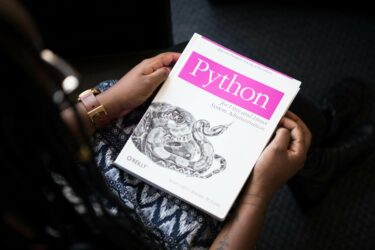Read full review of BookwormHub.com
Here we are again with the new portion of exciting and mind-boggling news on statistics. Statistics can be a dangerous weapon if it gets to the hands of wrong people. It is easy to manipulate the minds of others when you present them with numbers and facts. Little do people know that there is a million ways of presenting the same information. Thanks to the scientific approach, statistics is also a helpful tool in understanding the world around us better and finding the new ways of improving it. During the years of studies, you will see that statistics can be a powerful way of creating something new and useful as it is widely used in many subject areas. If at this point you experience some difficulties with the assignments, use our
statistics assignment help. And now, here is the most interesting news you might have missed:
New Approach to Health Care Databases Analysis
The goal of using a statistical method is to make the endless data files useful. As a rule, all those numbers seem to have no practical value but people keep collecting and storing them. Two statisticians Liangyuan Hu and Madhu Mazumdar of the Icahn School of Medicine at Mount Sinai have had enough of it. They decided to
develop advanced statistical modeling and analytic tools that will turn the arrays of numbers in healthcare databases into something meaningful.
This development plays an important role in helping doctors make informed decisions based on the data of previous cases. This new approach will be especially helpful in finding the most appropriate and optimal treatments for high-risk patients.
Let’s Start Finding Exoplanets Faster
The humanity is obsessed with finding planets that are similar to Earth. It is not only because we want to see if there are some forms of life out there, but also learn more about the Universe we live in. Unfortunately, finding exoplanets is not an easy thing to do and the process is too time-consuming. The astronomers get the data from Kepler space observatory and then have to analyze each individual planet in detail to make an informed conclusion. The scientists from the University of Chicago and Grinnell College think that there might be a
more effective way to finding Earth-like planets.
Astronomers have to face new challenges due to the volume of information available now thanks to Kepler. In the past, there was not much of data to analyze and now there seems to be too much of it. The idea of the new approach is to start using statistical analysis to determine the nature of planets without having to analyze all of them separately. Scientists will focus on the common trends instead of spending days exploring one planet at a time.
How Do We Make Decisions
It may seem that we sometimes make random decisions that are not based on any sound argumentation. In reality, our brains are constantly calculating the options we have and produce the feeling of confidence in us. This confidence can make us choose between the possible options. The
constant statistical assessments our brain makes are the key to discovering the mystery of our decision-making process. This is the conclusion Adam Kepecs, a neuroscientist at Cold Spring Harbor Laboratory, made after a series of research sessions.
The next step is to develop a model of confidence to learn more about the inner statistical process. Soon we’ll be able to answer the questions of when and why we give up on the initial plan and change it due to the lack of confidence. There is no certainty if the complexity of a situation has a significant influence on the confidence-forming process yet. Perhaps, there is something more to the calculations of a brain in that kind of situations. We’ll see.
The Way We See the World
Have you ever thought about the algorithm of how our brain analyzes what we see? We see a colorful picture as the result of its hard work. What are the steps it takes to create that picture? The answer to this question is important not only because we will be able to understand how our brains work. It will also help us to improve the technological systems which take part in self-driving cars, for example. Salk Institute researchers decided to use a statistical method to dig deeper. With its help, we will try to decode vision for computer-simulated vision in the future.
Do You Like Statistics as Much as We Do?
Great news to all the statistics aficionados who know the way people can manipulate numbers. It is always a great fun to analyze data and see the real picture. Starting from September, 19 ASA and The New York Times will let you test your math and statistical skills. You will be invited to analyze a graph from The New York Times and answer some questions regarding its meaning. It is a good practice and an opportunity to debate with other statistics gurus from around the world. Don’t miss it, it should be exciting.
That’s It for Today
We hope this news compilation was interesting to read. If you would like to share your own observations, please do so in the comments section. We will be more than glad to hear from you. See you next week with the next collection of not boring news.








